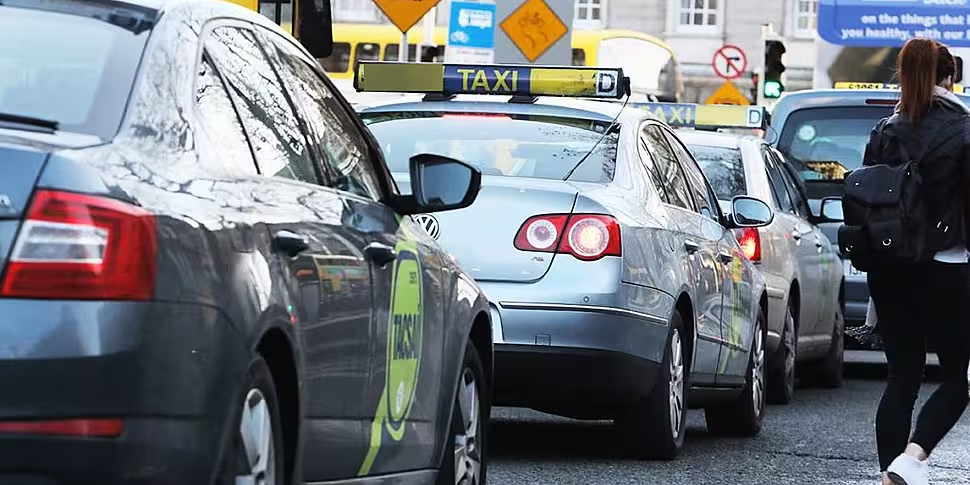Taxi drivers are 'suspicious' of a new traffic plan for Dublin city centre as they're not considered public transport.
National Private Hire & Taxi Association spokesperson Jim Waldron was reacting to the new draft plan.
It sets out proposed changes for the capital, including a 40% reduction in general traffic and "significant increases" in walking, cycling and public transport.
The overall plan sees a low traffic city centre with public transport, walking and cycling being prioritised.
Key initiatives include removing the two out of every three cars in the city centre which don't have a destination there, traffic management measures to prioritise pedestrians, public transport and cyclists, and reallocating sections of the North and South Quays to just public transport, walking and cycling.
There is also a proposal to make Parliament Street traffic-free.
Mr Waldron told The Hard Shoulder taxis aren't included in the plans.
"We're going to lose the taxi rank on Aston Quay... we get access to the bus lane but where do we stop?" he said.
"I think we need to be consulted into this, we need to be part of a workshop that's involved in the discussions.
"The problem is we're not considered as part of public transport in this plan, we're separate to the public transport.
"We're just thrown in with cars and goods vehicles."
Mr Waldron said taxis are being taken away without alternatives being put in place.
"We have to treat this with suspicion because the taxi ranks are being removed from the city constantly and we're not being informed about them until they're actually being moved.
"We're not seeing alternatives.
"If you're talking about the Plaza on College Green, where's the taxi ranks going to serve the Plaza?
"We're not getting mentioned in these things, so why wouldn't we be suspicious and why wouldn't we be worried about our futures?" he added.
'Devil in the detail'
Dublin Town CEO Richard Guiney said the plan has to make sure traffic isn't just pushed further out of the centre.
"We have to radically reduce the numbers of vehicles on our roads, all roads," he said.
"Our concern is that If you just address the city centre, but don't address the peripheries or the out-of-town shopping centres, then you could have the same number of vehicles on the roads but they just happening to be travelling in a different direction.
"There's also the devil in the detail; what we need to do is understand delivery systems.
"For example on Capel Street, it's not the traditional model of deliveries.
"You've got mom and pop stores, they have stock in their garage or in a lock-up and they actually transport that stuff in their private cars.
"We really do need to workshop this; we didn't get this on Capel Street and I think some errors that could have been easily avoided on Capel Street were made.
"What we need to do is actually do a very deep-dive into what are the actual issues where the city continues to function in a situation where we've got far less vehicles coming in.
"We'd be very strong on the fact that we need similar provisions in other locations."
Mr Guiney said a balanced approach is needed.
"There's an equity situation as as well that we're not making it difficult to access the city... we need the holistic approach," he added.
Listen back here:









